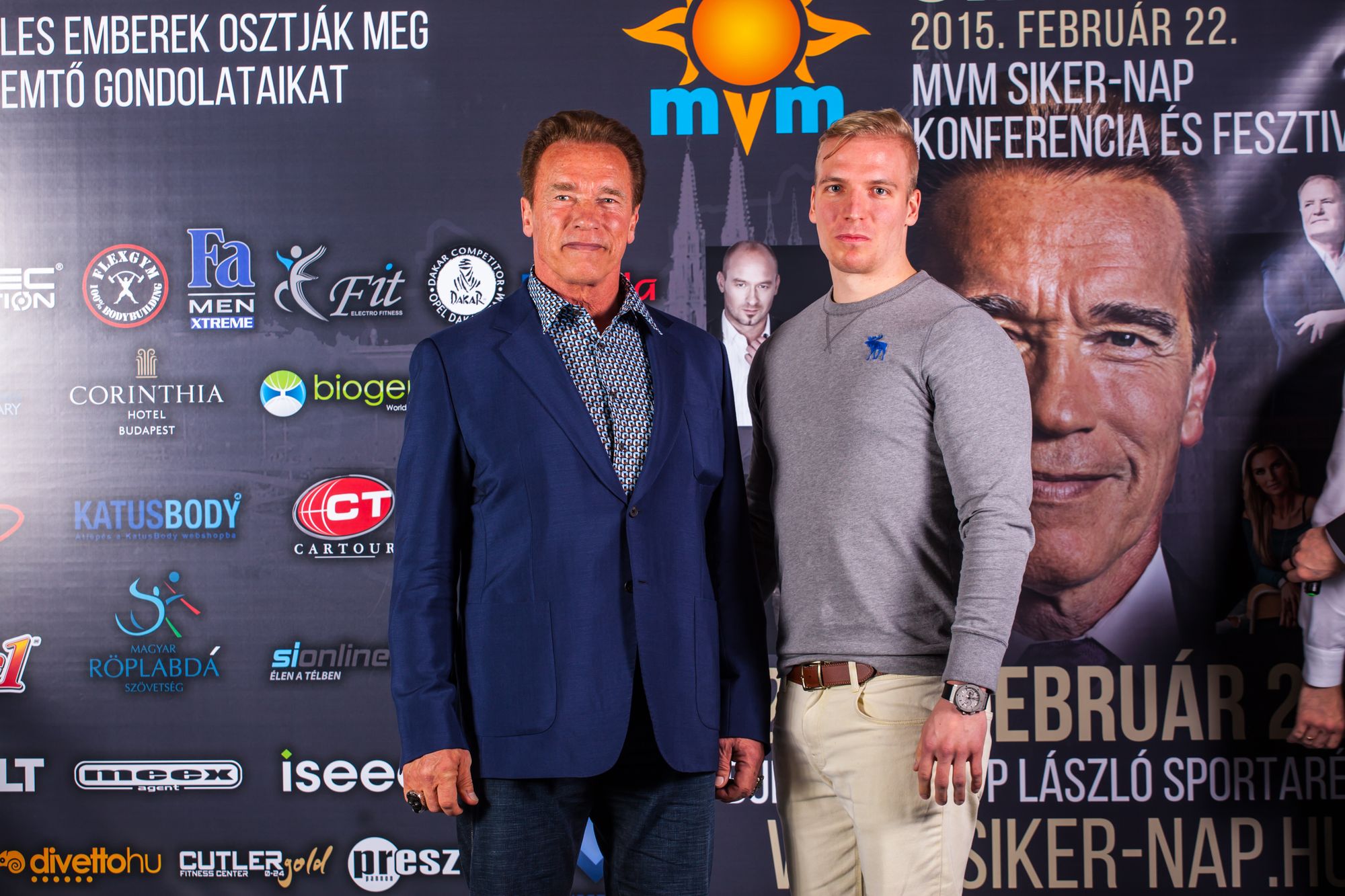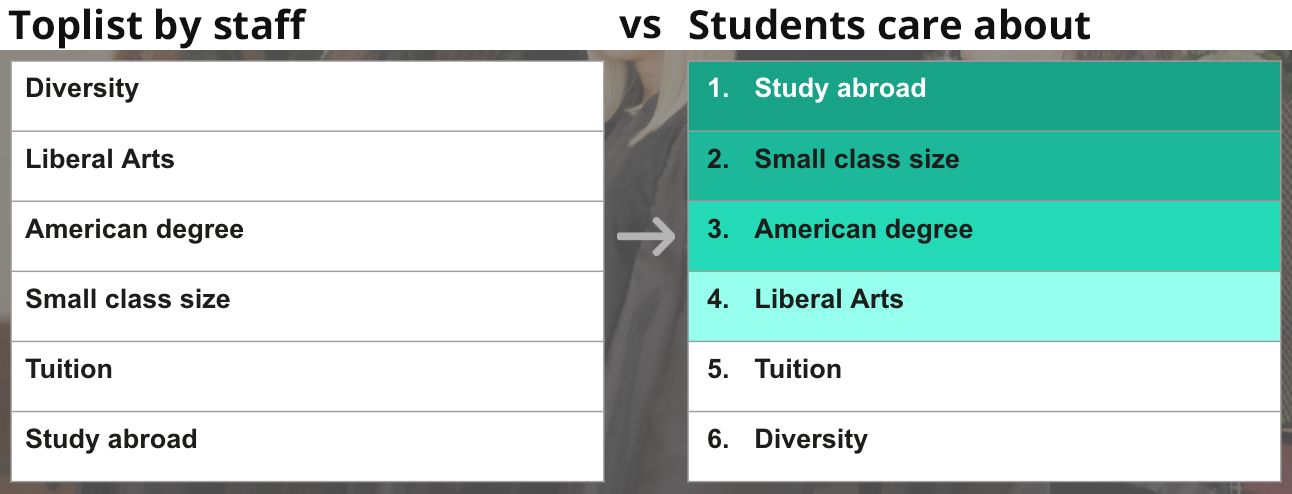My top 5 lessons from co-founding a multiple award-winning Marketing Agency with clients like Vodafone, and why did I left?
You would knock on our door if you want to sell 5,800 tickets online for a classical music concert, or if you are the 2nd biggest telecommunication company in the world doing your biggest project ever, replacing your whole technology stack.
We've worked in 18 industries and 13 languages.
Let’s imagine that you're organizing a major conference. It's coming up in only three weeks, Arnold Schwarzenegger is your keynote speaker, but you are still nowhere near selling out, and in desperate need of a solution.
That's where we come in, use our scientific method with rapid fine-tuning cycles, and make this event sold out with people waiting in line.
You can’t pull this off, without being deep in the trenches. You have to gain your own insights. Fast. This is why my cell number is on the landing page, so I can personally hear all the objections, questions and frustrations of real customers.
Emergency marketing feels like being in a war room, you are constantly at the edge of your competence. In flow. It is easy to get hooked on the adrenalin.

Co-founding a digital marketing agency was fun, and conducting more than 3,700 hours of behavioral research and testing left me with more practical models and insight than I could ever wish for.
And then suddenly we didn't take any new clients.
The reason wasn't burn out, but before getting into that, lets see my 5 biggest takeaways from running a marketing agency:
5) Your goal is your scorecard
You can't guess how many times I have asked: "What do we want to achieve here?"
Day in day out big teams argue about individual techniques, unable to judge which one would be the best fit.
Knowing your goal makes choosing the right tactic trivial. Conversely, if you don't know which tactic to use, step back and work on your goals!
This requires serious mental effort. Just think for yourself, what do you want to achieve in a year? If you know, awesome, if you don't, put in the energy.
I know this sounds cliché, but common sense is unfortunately not common practice. Doing the unsexy fundamentals is way more important than using a shiny new tool.
This is why the Team Alignment Map is a brilliant framework to bring any team on the same page:
- define your goals
- define commitments from each member needed to achieve the goals
- define resources needed
- define risks: use pre-mortem, ask "Let's imagine we are in the future, and the project has failed, why did it happen?"
- do a backward track: define resources and commitments which are needed to mitigate risks
4) Magical moment of transition
Appreciate and delve into magical moments, when non-buyers become buyers, or someone replaces a brand with another one.
Ask buyers:
"What was your biggest concern, which almost prevented you from buying?"
Ask non-buyers:
"What is the single biggest reason you didn't buy?"
Ask for email address early in your sales funnel, so you can reach out for those who abandoned their cart.
Ask those who have switched between brands:
"What was the biggest reason you switched? What is the number one thing, which would have prevented you from switching?"
Try to sell offline. What you can't sell face-to-face, you won't be able to sell online. Internet is just eliminating friction and works 24/7, it is not a magic pill. You have to handle the same objections online as offline.
First collect information without a filter, then run ads to prioritize what is really resonating with your target audience.
Speak to your executives, your sales people, and your customers. Never trust reports, get your hands dirty. Learn from every encounter.
“Diversity is our biggest Unique Selling Proposition”, told us almost every faculty member from an American College in Budapest, which was facing a constant declining enrollment rate.
When we run quick online ads, it turned out future students value the opportunity to study abroad the most.

Basing your priorities on behavior data relieves you from stress. You know exactly what to communicate on your website, university fairs or TV. There are no more second guesses.
And did it work? We have doubled the enrollment rate in one year.
3) Trust behavior over words, test before invest.
"Thinking is to humans as swimming is to cats; they can do it but they'd prefer not to." - Daniel Kahneman, 2002 Economic Nobel Prize winner
Kahneman in his seminal book Thinking Fast and Slow introduced the concept of System 1 and System 2 thinking. The former is used to make mainly emotional snap decisions, and the latter represents a more deliberate rational thinking.
The sobering takeaway from Kahneman is that humans only use precious mental resources and their System 2 thinking to rationalize an already made emotional decision.
There are countless hidden biases why people can't answer surveys objectively, the biggest offender is they want to conform to what they think is expected from them.
Instead of asking what would they hypothetically do, ask what is their biggest problem or frustration.
Your job is then to come up with answers and test those solutions. Show half of your visitors a red button and half of your visitors a blue button. And see how people act. Trust behavioral data over what people say.
Also test ideas even before developing any product, try to sell it like it already exists. Run Facebook ads to a landing page with a buy button, which shows when clicked:
"Get on our waiting list, and we will contact you as soon as new spots open up: ___your email address___". This is called Fake Door Testing.
I highly recommend Testing business ideas by Strategyzer if you are interested in this topic.
2) Predict the future: focus on what’s static
"I very frequently get the question: 'What's going to change in the next 10 years?' I almost never get the question: 'What's not going to change in the next 10 years?'" - Jeff Bezos, founder of Amazon
In 10 years shoppers are still going to look for cheaper prices, faster delivery, and higher quality.
From this frame different technologies like drones, AR, VR, 3D printing, etc. are just different modalities for delivering your services. You won't be stuck to your current technology, it becomes easier to innovate.
Your customers not only have functional jobs, they also have emotional and social jobs, which means they want to feel and be perceived in a certain way.
When people hire Starbucks to get a job done, it’s functional part is waking up in the morning, it’s emotional part is feeling loved by drinking a warm silky fluid, and it’s social job is to signal status by buying an easy to recognize overpriced cup with coffee in it. This is called, the jobs-to-be-done framework.
If you are a competitor aiming for competing on the social aspect, you can compete with a more exclusive look, eg. a totally black cup with a gold logo. Or spot emerging social jobs, like “green signaling”, where consumers want to be seen as environmentally conscious, and provide easy to recognize 100% recycable cups.
In practice you would research, brainstorm, and test different angles for each area.
You can get unstuck in innovation and competition easily with proper framing.
1) Who is your judge? You get good at what you really do.
I have cheated a little bit here, because this point is also the reason I quit focusing on running a marketing agency. Let me explain.
We realized early on, that we don’t want to be a pure creative agency, because then your clients will be the ones judging your work. This in turn will result in learning how to comply with marketing managers and legal teams at big companies.
We wanted skin in the game, so we consciously aimed for measurable projects. In return we got good at delivering business results, and we gained invaluable insights fast.
But it turned out that after a while the learning curve flattens out, and the new choke-point in improving becomes how efficiently we can sell new tools and ideas to our clients.
Eventually running the agency became more about educating clients, writing contracts, and recovering money. And less about actual creativity, marketing and learning.
The same is happening with physicians, where the burn-out rate can be as high as 79% for primary care physicians according to Business Insider. The main culprit is 50% administrative work every day. Doctors don’t want to be good at administration, they want to help people.
In order to increase our learning rate and positive impact, we had to move on to our own projects. This is why we are deep into Healthcare and Blockchain.
Either you prioritize what you want, or someone else does it for you.